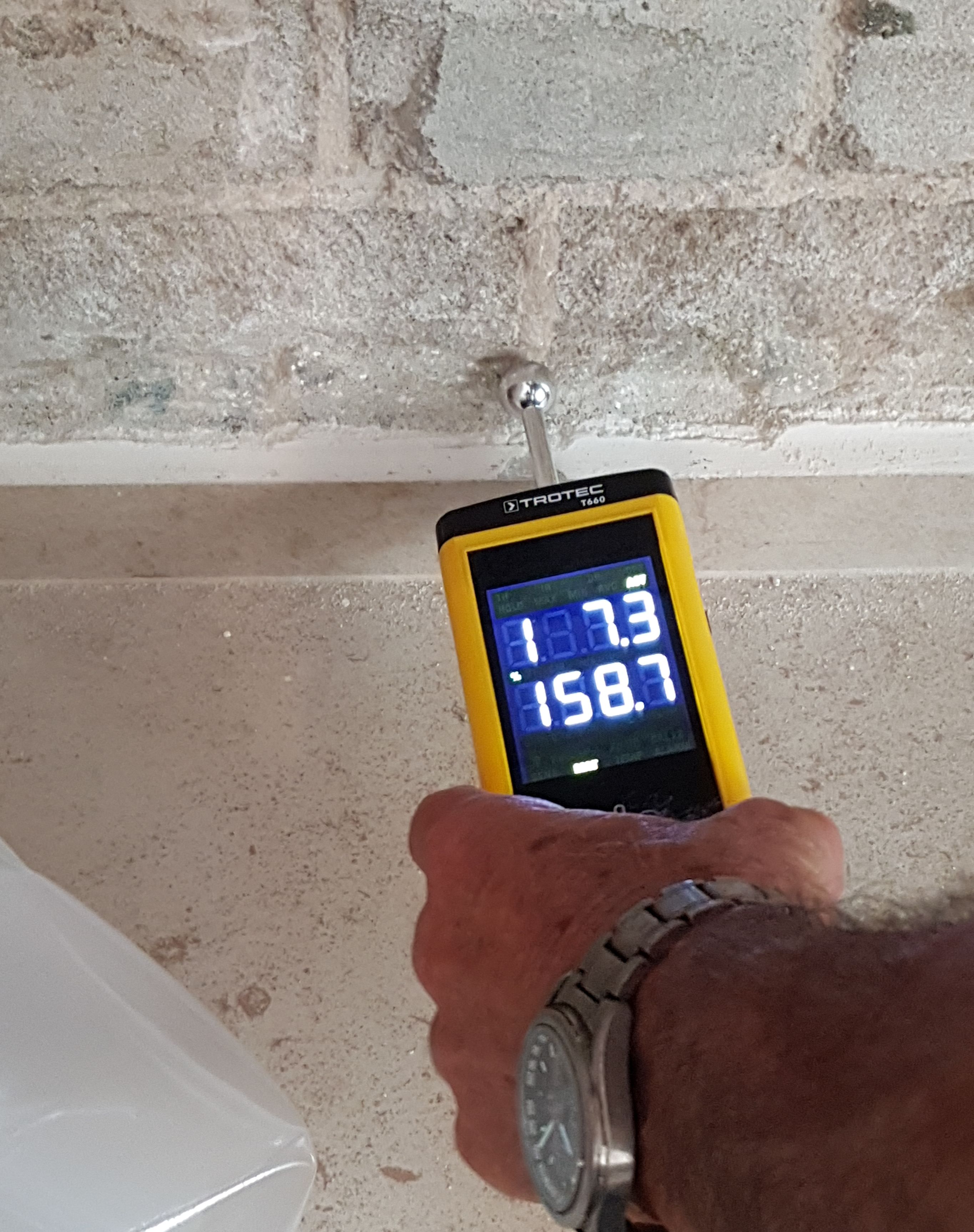Moisture Meter Acquiring Guide: What to Search for in High-Quality Instruments
Moisture Meter Acquiring Guide: What to Search for in High-Quality Instruments
Blog Article
Delve Into the Globe of Moisture Meters: Every Little Thing You Need to Know
In the world of dampness meters exists a world of accuracy and practicality that typically goes unnoticed. Understanding exactly how moisture meters run, the various types offered, and their varied uses can lose light on their importance in ensuring quality and efficiency.
Just How Moisture Meters Work
Moisture meters operate by measuring the electrical conductivity or capacitance of products to figure out the wetness web content present. These meters are vital devices across different sectors, including building and construction, agriculture, and woodworking. By using various approaches such as pin-type or pinless innovation, wetness meters give accurate analyses that aid professionals make informed decisions.
Pin-type dampness meters function by placing the sharp pins right into the product being checked. On the other hand, pinless wetness meters use electromagnetic signals to check a bigger area without causing any kind of damages to the product's surface.
Regardless of the approach made use of, wetness meters play a vital function in stopping concerns such as mold growth, structural damage, or product flaws brought on by excess wetness. Understanding how these meters job is essential for making certain the top quality and stability of materials in numerous applications.
Kinds of Moisture Meters
Given the essential duty moisture meters play in numerous markets, it is vital to recognize the various types offered to professionals for precisely assessing wetness levels - Moisture Meter. There are mostly two major types of dampness meters: pin-type and pinless dampness meters

On the various other hand, pinless wetness meters use electro-magnetic sensor plates to scan a larger location of the material without triggering any type of damage. This kind appropriates for quickly scanning big areas and is commonly made use of for floor covering, wall surfaces, and ceilings. Pinless meters are hassle-free for taking analyses on completed surfaces without leaving any visible marks.
Both kinds of wetness meters have their benefits and are chosen based on the details demands of the work at hand. Recognizing the differences in between these types is vital for professionals to make precise dampness assessments.
Applications Across Industries
With varied functionalities, wetness meters locate extensive application throughout numerous industries, helping specialists in ensuring ideal problems for products and structures. In the farming field, moisture meters are vital for determining the moisture material in grains, seeds, and hay, making sure top quality control and preventing mold growth. Building specialists count on moisture meters to assess the moisture levels in building materials like concrete, drywall, and wood, which is vital for keeping architectural honesty and protecting against concerns like rot or mold and mildew. The floor covering sector utilizes dampness meters to gauge the dampness web content in subfloors prior more information to setting up different flooring, avoiding costly damages due to excess moisture. Moreover, in the food industry, dampness meters are made use of to check and regulate moisture levels in products such as grains, nuts, and dried fruits to keep quality and high quality. Furthermore, moisture meters play a vital duty in the reconstruction and damage control industry by aiding experts address and recognize water damage in buildings without delay. Throughout these diverse industries, wetness meters are important tools for making certain the high quality, safety, and long life of various products and products.
Tips for Utilizing Dampness Meters
When gauging the moisture content in numerous materials,Make use of the wetness meter's calibration settings to make sure exact readings. Calibration is vital for the correct performance of a dampness meter. Prior to each use, it is advisable to inspect and adjust the calibration setups according to the details product being evaluated. Furthermore, see to it the meter is readied to the proper moisture variety for the product you are determining to obtain one of the most precise outcomes.
When using a pin-type moisture meter, put the pins to the ideal deepness suggested for the material being evaluated. This ensures that the moisture analyses are drawn investigate this site from the right depth within the material, providing an extra precise representation of its moisture web content. For pinless dampness meters, keep in mind to maintain correct call with the material's surface to obtain trusted analyses.
Routinely examine and replace the batteries in your dampness meter to stop incorrect analyses because of low power. Shop the meter in a dry and risk-free area when not being used to lengthen its life expectancy and keep its accuracy. By following these ideas, you can take full advantage of the efficiency of your moisture meter and obtain exact moisture material dimensions throughout different materials.
Upkeep and Calibration
To make sure the precision of wetness material dimensions, routine maintenance and calibration of the wetness meter are vital steps in its appropriate functioning. Calibration adjusts the moisture meter to ensure that it provides consistent and reliable outcomes.
Calibration needs to be executed occasionally, particularly if the wetness meter is used frequently or in critical applications where precise dimensions are called for. Lots of moisture meters come with calibration devices or can be adjusted by professional services. Moisture Meter. It is advised to keep a log of calibration dates and results to track the efficiency of the wetness meter in time. By calibrating the dampness and keeping meter on a regular basis, individuals can trust the precision of the wetness web content dimensions obtained.
Conclusion

To conclude, moisture meters play a vital role in different markets by accurately determining the dampness material of materials. Recognizing exactly how these tools work, the different types available, and correct maintenance and calibration are crucial for obtaining reputable outcomes. Whether in manufacturing, agriculture, or building, using moisture meters aids guarantee top quality control and performance in processes.

In verdict, dampness meters play a critical function in different industries by accurately gauging the dampness material of materials.
Report this page